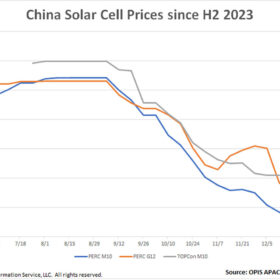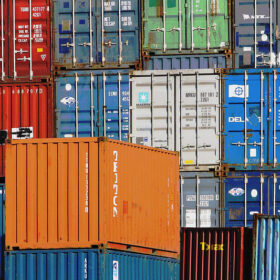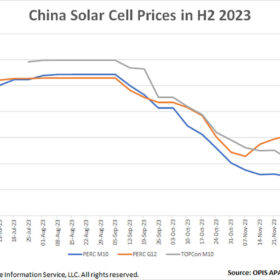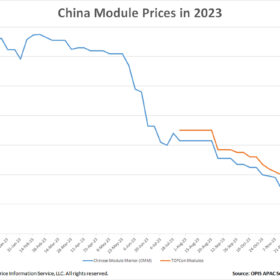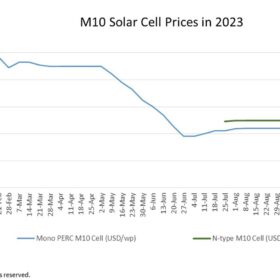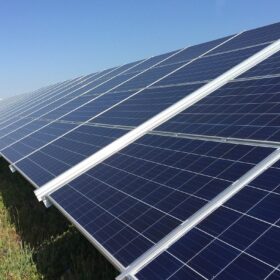China solar cell prices decline on sluggish downstream demand
In a new weekly update for pv magazine, OPIS, a Dow Jones company, provides a quick look at the main price trends in the global PV industry.
Major trends in the Indian solar PV sector
The Indian solar PV sector is experiencing transformative trends, driven by a combination of technological advancements, government support, and a growing awareness of the need for sustainable energy sources. The rapid expansion of solar capacity, coupled with innovations such as floating solar farms and green hydrogen production, paints a promising picture for the future of renewable energy in India.
A look back at solar in 2023
The Indian government has demonstrated a robust commitment to advancing solar energy by implementing various strategic initiatives.
Competition heats up
Oversupply is hitting some solar manufacturers hard but grid constraints and labor shortages are unlikely to hold the solar industry back in 2024.
China’s monocrystalline PERC cell prices extend losses while TOPCon cells hold steady
In a new weekly update for pv magazine, OPIS, a Dow Jones company, provides a quick look at the main price trends in the global PV industry.
Implementing robust O&M practices in the solar industry
Ensuring the reliable performance of solar PV systems demands a meticulous approach to essential solar operations and maintenance (O&M) practices. This encompasses not only the solar PV panels but also batteries, charge controllers, inverters, and all associated wiring and connections.
China module prices slide to new record low, manufacturers cut production
In a new weekly update for pv magazine, OPIS, a Dow Jones company, provides a quick look at the main price trends in the global PV industry.
Wires and cables in the solar industry
The solar industry growth has accelerated the demand for wires and cables in India. Since solar cables are key in transmitting power from the PV panels to the system, it is essential to invest in the best-suited type of solar cable that meets stability and safety norms.
M10 solar cell prices dive to new record low
In a new weekly update for pv magazine, OPIS, a Dow Jones company, provides a quick look at the main price trends in the global PV industry.
Fostering solar adoption requires a holistic approach
While the benefits of solar adoption are evident, challenges persist. The irregularity of solar power and the lack of efficient storage technologies remain primary concerns. The upfront costs of solar installations, though decreasing, remain a barrier for many. Complex regulations and bureaucratic hurdles often deter individuals and businesses from embracing solar energy. Addressing these challenges demands a concentrated effort.
